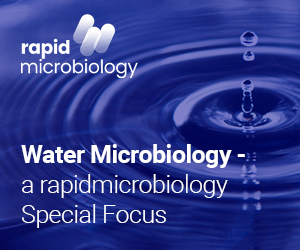NASA and Nanobac Life Sciences Collaborate on Nanobacterium sanguineum
Nanobac Life Sciences, Inc. have announced an agreement with NASA’s Johnson Space Center (JSC), Houston Texas, to collaborate on research on Nanobacteria and its nature and role in pathological calcification, including the detection and treatment of the pathogen. Since astronauts may be more prone to an increased rate of pathological calcification while in a zero gravity environment, the collaboration will bring a new approach to NASA’s need to better understand the effects of long-term space travel on humans. In addition, Nanobac’s work provides a model for studying mineralized organic matters that could aid NASA in the search for extraterrestrial life.
Under the agreement, NASA will provide workspace at JSC for Nanobac’s personnel located at JSC. The agreement further provides Nanobac the opportunity to work together with a multidisciplinary team of NASA researchers while having access to basic laboratory services for nanobacteria science, including electron microscopy, molecular biology and geology-mineralogy research facilities. Projects ranging from searching for nanobacteria biosignatures in earth fossils and in Mars meteorites to diagnosing and treating nanobacteria infection are anticipated. Nanobac will provide JSC with equipment and specialty supplies for nanobacteria research and apply its pioneering diagnostic and treatment experience in the field.
Nanobacterium sanguineum (nanobacteria) is the smallest self-replicating organism ever detected – at 50 to 500 billionths of a meter, 1/1000th the size of the smallest previously known bacteria. Nanobacteria have been implicated in a variety of human diseases associated with pathological calcification.
Nanobacteria were first discovered in 1988 by a Finnish researcher, and Nanobac OY co-Founder Olavi Kajander, M.D., Ph.D. Medical microbiologist Neva Ciftcioglu, Ph.D. joined his team in 1991 and their corroborated work with nanobacteria over the past 13 years has put them at the forefront of research into this medically important pathogen. Their research established that the blood-borne nanobacteria forms slow-growing calcified colonies in arteries and organs.
Nanobac has identified two biomarkers of nanobacterial infection, and expects to file for FDA approval of its NB2™ ELISA assay to detect nanobacterial antigen and IgG antibody. The Nanobac IgG test is designed to measure the body’s immune response to the nanobacterial infection. The nanobacteria antigen test is in the final stages of development.
Source : Nanobac Life Sciences View archived contact details
Posted on September 14, 2004







